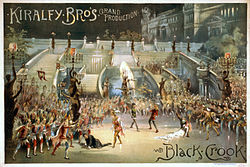- American bands begin touring widely across the country, a practice formerly associated mostly with renowned European performers. [8]
- The Civil War leads to greater female participation in music throughout the nation, in part due to the absence of male performers and managers fighting in the war. Other factors include the precedent-setting wave of English female composers during the same era, the growth in recognition for the composers of parlor songs and dances and the birth of a specialized wave of magazines and other businesses catering to female clientele. [111]
- Major Confederate music publishing houses arise throughout the South, including that of Armand Blackmar of New Orleans, and later, Columbus, Georgia, Joseph Block of Mobile, Alabama, and John Schreiner's business headquartered in Macon, Georgia. Other music publishing firms in the South are located in Richmond, Virginia, Augusta, Georgia, Savannah, Georgia, Charleston, South Carolina and Columbia, South Carolina. [112]
- A distinctive Irish-American song tradition takes shape, while the Irish begin to enter the theater business in large numbers. [113]
- Community professional bands begin flourishing across the country. Wind ensembles are especially popular. [114]
|








